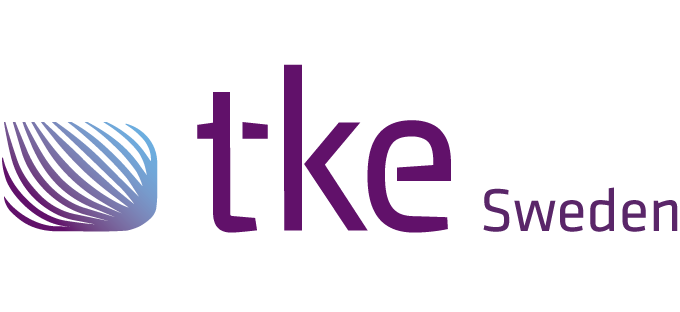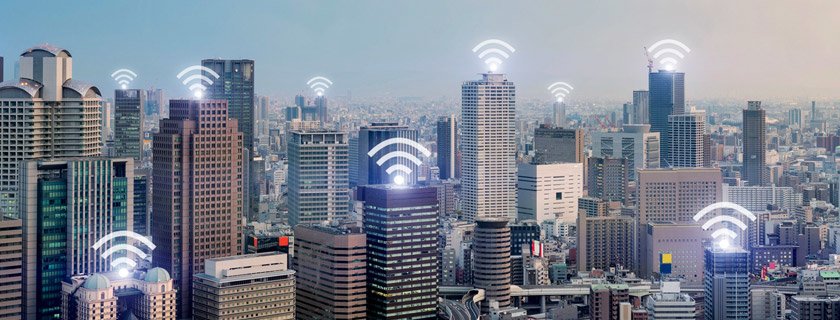Use right network technology for right purpose
Many of us is thinking every now and then, would it make sense to throw away other network technologies and just use Ethernet or WiFi for everything? It sounds attractive, that single network does everything, only a single tool chain is required and only single technology needs to be learned. At a first glance the answer is ”of course”, but after thinking a while, the answer turn into ”of course not”.
Performance technology
When one considers Ethernet and especially 1GBE, high performance is the first characteristic coming into a mind. Let’s dive into the details of 100BaseTX, which is used in most Ethernet based field buses. With TCP/IP, maximum packet size is approximately 1500 bytes, which results approximately 66667 messages in second at 100%. However, the maximum practical load is far lower, meaning some 6667 to 13334 messages in second. Each message represents an update of some signal values.
The latest CAN – or more officially – ISO 11898-1 with payload data capability up to 64 bytes per message and high bit rate up to 8x standard bit rate, approximately 7400 messages per second. Furthermore, it is up to the application design, how high utilization may be achieved without compromising with the application dynamics. So, the performance difference in cyclic, isochronous process signal updates is not significant, especially because single device needs to update small number of signal values.
Use right network technology
Dependability is interesting topic. First thoughts give an idea, that well, Internet is working so nice that why not to use the same concepts in instrumentation, too. The use of public networks – browsing web and sending and receiving emails seems to be smooth in general, because sophisticated error detection and correction mechanisms do their job in the background and because human being has constrained capabilities to detect delays shorter than approximately 140ms and short delay variations.
Furthermore, video codecs do their job so nice, that relatively high number of corrupted packages are required to get cleary visible effects in the screen. Error detection in the TCP/IP is mainly based on various checksums and data length fields. The resulting end-to-end delivery dependability can be put into defined level just by adding large enough application layer checksum. Detecting is not enough, broken packets need to be retransmitted, too. Large packet size boost the performance, but leads into higher wasted bandwidth when data becomes corrupted and needs to be retransmitted.
CAN is designed to be so dependable, that undetected corrupted packets don’t appear in a lifetime of a typical passanger car. In addition to the checksum and data length field there are fixed bits and bit patterns supporting behavior of the checksum and length monitoring. While typical Ethernet physical layer connection is point-to-point, all devices in a CAN network are listening all the communication all the time. That increases the error detection performance, because the more there are divces in a single network, the more there are devices monitoring the communication.
Cost estimation of network
Cost estimation of network technologies is complex and focus shall be in many levels. First, required silicon capacity by communication controller is approcimately four times higher in Ethernet than in CAN. It is significant in the smallest scale networked devices, typically sensors. Second, size of the corresponding protocol stack differs a lot – CANopen interface of a small sensor or I/O-device fits into 8kB, but the TCP/IP stack requires some dozens of kB in minimum. Program memory footprint has significant impact on the HW cost, especially in the smallest scale devices. Third, the memory footprint also corresponds with the required processing power. Many Ethernet based field buses work in theory with the standard HW, but practically acceptable performance is achieved only with special HW accelerators, increasing total HW cost and reducing applicability in the smallest scale devices, which represent largest proportion of the installed devices.
Why not to use consumer electronics in order to reduce costs? Required ambient operating temperature set the first challenge. Consumer electronics work in office environment and control electronics shall typically operate from -40ºC to +100ºC or even higher. Other requirements cover humidity, dust, dirt, vibration and schocks. Major difference between consumer and industrial control systems is, that performance degradation is typically not accepted within the specified environmental conditions.
Operation principle
At a first glance Ethernet sound attractive, because it is widely used and well known. However, also in industrial communication, Ethernet networks are based on switches and point-to-point connections between swich and connected devices. CAN is more versatile, because smaller systems may be based on single control network and larger ones may be implemented by utilizing switched physical structure, with or without hierarchical logical network levels. Most significant consequence is cabling – CAN based systems enable the use of linear network structure, where devices are connected in the same line, instead of star-shaped Ethernet installations.
Also basic communication is different. Majority of Ethernet packets are transmitted from a single producer to single consumer in both physical layer and logical link layer. There exist also multicast and broadcast protocols, which are not so commonly used. CAN communication fits better to control systems thanks to its point-to-multipoint style operating principle. Such principle remains in switched networks, too.
Communication is not the only requirement, also power supply shall be considered. Ethernet requires two or four pairs of wires for signaling. First topic is, that due to high transmission speed, impedance matching shall be very accurate, resulting very tight tolerances in cables and connectors. Transmission line characteristics are also important in CAN, but tolerances are not so tight. Second topic is availability of widely accepted standard connectors and cables. Ethernet cables are mainly designed for signalling and supplemented by constrained power supply capability, PoE. On the contrary, there are many proven connector and cable families supporting combined CAN communication and power supply.
Summary – Ethernet networking is required in backbone communication
This article provided just a brief overview of the main topics, why CAN based communication remains significant and productive. Ethernet based field buses are already in use, but there are significant constraints focusing them rather in backbone domains than in the all communication levels of modern field bus systems. Car industry have developed modern system architectures, where Ethernet networking is required in backbone communication in order to provide high enough connectivity to Internet. Lower and more timing critical subsystems are and will also be in the future based mainly on CAN.
Became interested on this topic? Contact us in order to get more information and learn how we can boost your business.



